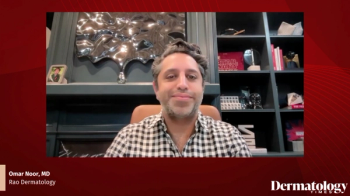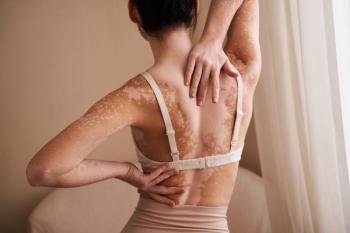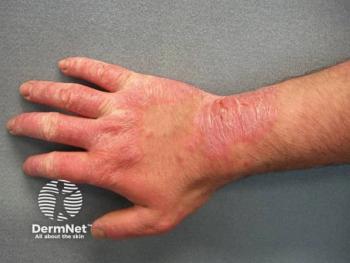
Workflow Wins For Even the Busiest Practices
Key Takeaways
- Efficient dermatology practice requires structured workflows, early preparation, and standardized exams to manage high patient volumes and administrative tasks effectively.
- Delegation to dependable medical assistants and empowering staff are crucial for enhancing clinical efficiency and reducing cognitive load.
Discover practical strategies for enhancing efficiency, focusing on workflow optimization, teamwork, and clinician well-being for better patient care.
In a high-paced specialty like dermatology, where clinicians may see upwards of 60 patients per day, efficiency becomes not just a goal, but a necessity. At the Fall Clinical NP/PA 2025 conference, Francine Phillips, PA-C, delivered an engaging and pragmatic talk on clinical efficiency, focusing on how dermatology providers can streamline workflows while preserving quality of care and clinician well-being.1
Recognizing the Time Crunch
Phillips began by emphasizing the central issue: time. The volume of patients combined with administrative duties, documentation, and education tasks can create intense time pressures. These pressures often lead to decreased job satisfaction, burnout, and the potential for clinical errors.2 Phillips underscored that working “smarter, not harder” should be a guiding principle in clinical practice.
Structured Workflow and Preparation
One of the key takeaways from Phillips’ presentation was the value of preparation. She shared her personal routine of arriving 30 minutes early each day to review her schedule and mentally prepare. Identifying potentially time-consuming patients—such as those with multiple concerns or those seeking cosmetic advice—helps her set realistic expectations and plan accordingly. She also scans her list for straightforward visits (e.g., acne follow-ups or single lesion checks) as these provide opportunities to stay on schedule.
A cornerstone of her efficiency strategy is a standardized skin exam approach. Regardless of patient concern, she performs exams systematically and uniformly, which minimizes the risk of missing important findings and ensures consistency. She also speaks continuously during the exam, addressing patient concerns, explaining procedures, and reviewing recommendations—effectively multitasking without sacrificing attention to detail.
Delegation and Teamwork
Phillips stressed the importance of dependable medical assistants (MAs) and the role of staff empowerment in enhancing efficiency. Her consistent team of assistants anticipates her needs, from preparing biopsy trays to obtaining informed consent and taking photographs of skin conditions. This allows Phillips to enter each room fully prepared, saving time and reducing cognitive load.
She advises against returning to a patient room after the initial visit, calling it a "trap" that often leads to unanticipated delays. Loose ends should be tied up before leaving, and the support staff should be empowered to handle follow-up tasks.
Charting and Technology Tools
In discussing documentation, Phillips highlighted the need for timely charting. Rather than relying on memory at the end of the day, she charts every few patients. She utilizes customized EMR templates, including a “Franny’s Favorites” list of common diagnoses, procedures, and medications, to expedite note-taking.
Technology plays a central role in her workflow. Phillips credits clinical apps—particularly UpToDate—with enhancing both her confidence and knowledge during patient care. She recalled the days when textbooks were the only reference, noting how real-time access to clinical resources has become an invaluable asset.
Wellness and Burnout Prevention
A particularly resonant part of her presentation focused on clinician well-being. Phillips encouraged providers to protect their lunch breaks, hydrate, and avoid after-hours charting when possible. She advocates for taking time off unapologetically, including “Ferris Bueller days”—her term for mental health days taken without guilt. She reminds providers that their personal time is essential for long-term effectiveness and satisfaction.
Moreover, staff morale was a repeated theme. Phillips believes in daily team “huddles” to set a positive tone and communicate essential updates. She also recommends small, thoughtful gestures—like giving gift cards or favorite snacks—as a means of showing appreciation and maintaining staff engagement.
Conclusion
Phillips’ presentation offered more than efficiency tips; it provided a comprehensive look at how workflow, teamwork, and self-care intersect in clinical practice. By structuring patient encounters, leveraging support staff, embracing technology, and prioritizing mental health, dermatology providers can enhance both their performance and their professional fulfillment. Her message was clear: efficiency is not about hustling harder—it's about creating a sustainable, supportive environment where quality care and personal well-being can coexist.
References
1. Phillips F. Time is your currency: Productivity hacks for the dermatology provider. Presentation at Fall Clinical PA/NP 2025 Conference; May 30-June 2, 2025; Orlando, Florida.
2. Marchalik R, Marchalik D, Wang H, Pasieka H. Drivers and sequelae of burnout in U.S. dermatology trainees. Int J Womens Dermatol. 2021 May 12;7(5Part B):780-786. doi: 10.1016/j.ijwd.2021.05.001. PMID: 35028382; PMCID: PMC8714592.
Newsletter
Like what you’re reading? Subscribe to Dermatology Times for weekly updates on therapies, innovations, and real-world practice tips.



















